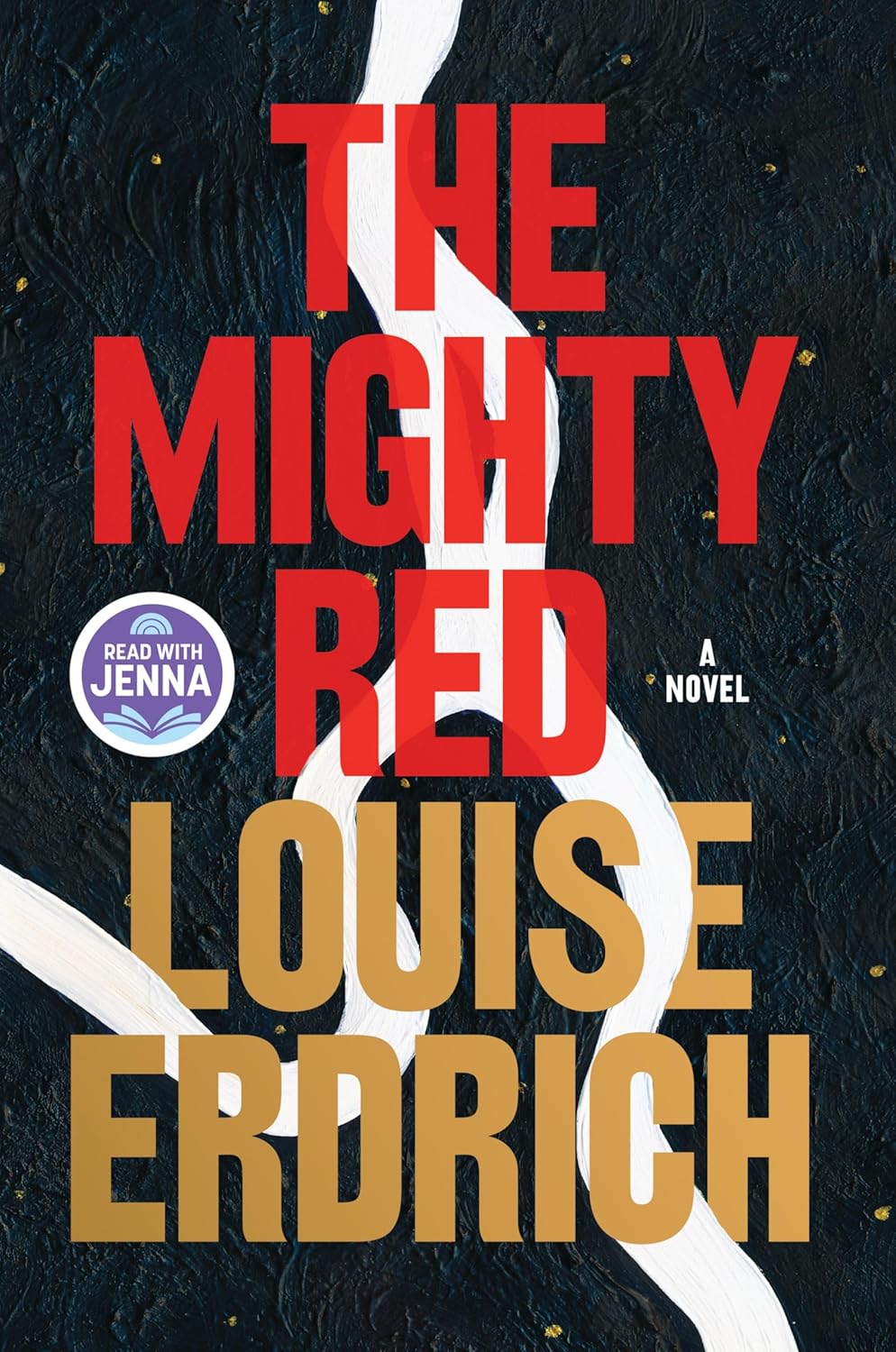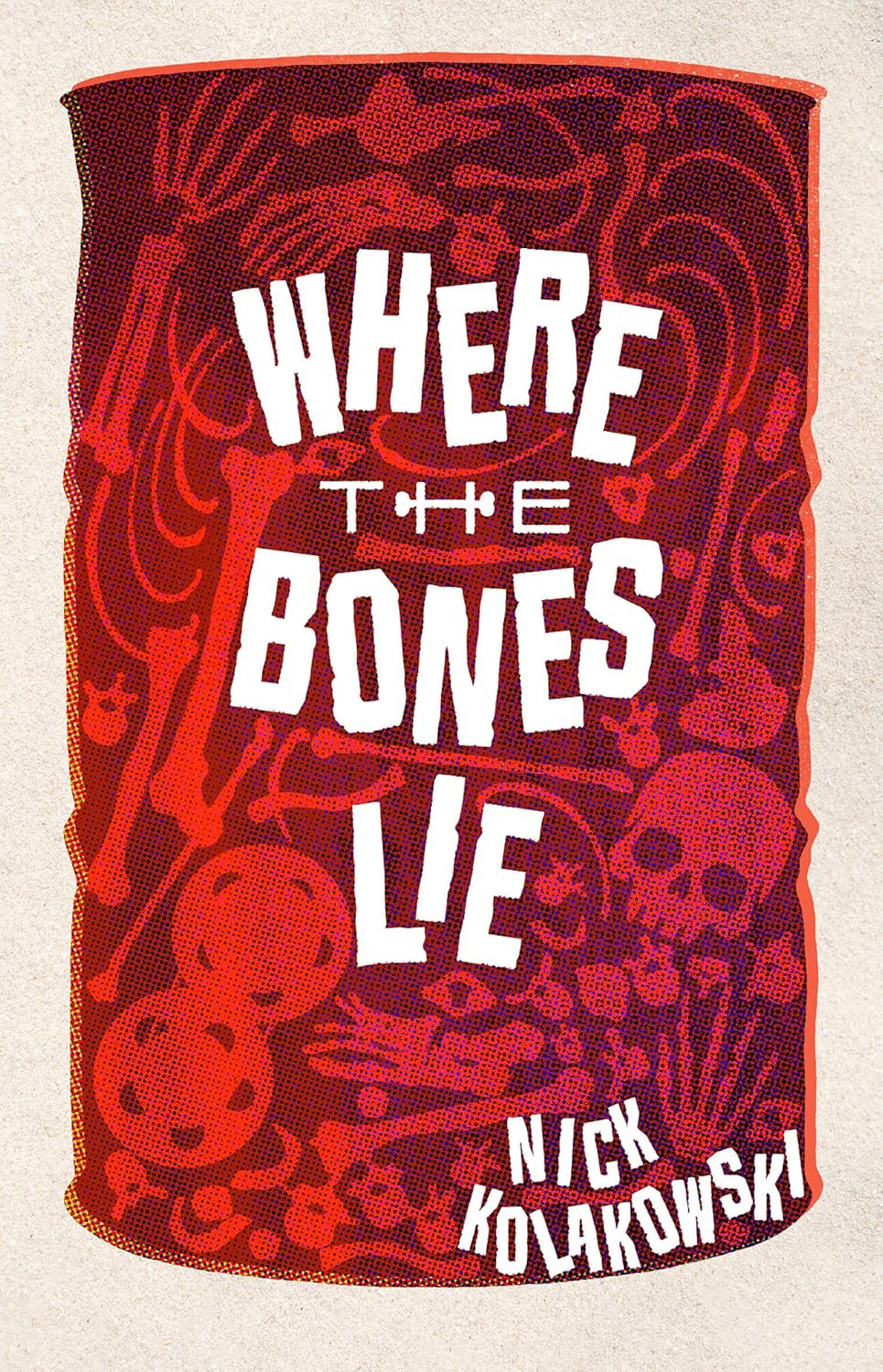The Mighty Red: A Novel
- By Louise Erdrich
- Harper
- 384 pp.
- Reviewed by Ellen Prentiss Campbell
- October 10, 2024
Upheaval comes fast — and resolves too soon — in the lauded storyteller’s latest tale.

The Mighty Red, Louise Erdrich’s 19th novel, set in the recent past, tells a story of Nebraska’s Red River Valley — its land, economy, climate, ecosystem, and people. Chronic personal and community-wide problems worsen, triggered by two disasters: a fatal snowmobile accident involving star members of the high school football team, and the 2008 Wall Street crash, which wipes out the meager savings of the few who had any. The local financial adviser disappears, along with the church’s investment account he managed.
This is not a reservation community, though some are descended from Michif ancestors. Almost everyone is related by long association if not blood. Since the double catastrophes, bonds are stressed by blame, suspicion, and grief. There is rising tension over increasing scarcity, diminishing options, and, especially among the young, feelings of entrapment.
Traditional family farms have been devoured by industrial-scale agriculture. The local economy rests on the demand for processed sugar; the titular Mighty Red refers to the region’s longtime cash crop, the sugar beet. Years of intensive one-crop farming, dependent on pesticides and chemically adulterated soil, have stripped the earth of minerals and decimated insect and bird pollinators.
Set at this turbulent moment, The Mighty Red is a novel in the classic social-problem tradition (think George Eliot’s Middlemarch). This contemporary story concerns the land itself as much as the people who have taken, own, and work it (think Willa Cather).
And as with Eliot and Cather, the moral — as well as financial and personal — stakes are high. Erdrich approaches allegory in the novel; major characters and cameo players are almost archetypes. She links the voices of multiple characters along a continuous thread of omniscient narration. Here, for example, the authorial presence might be Cather herself calling out a warning across time:
“After crossing the Red River sometime in the 1830’s, a priest climbed a tree seeking a spot where he could safely observe an approaching herd of buffalo…He was forced to stay in the tree for…three days of horizon-to-horizon buffalo…There was no end to the beasts. Just like it seems there is no end to us, in our billions. But everything on earth can be eliminated under the right conditions.”
The combination of multiple individual voices and authorial omniscience provides a composite perspective: personal snapshots unified via aerial photograph. The author employs another classic novelistic tradition, too: the marriage plot. Erdrich structures her story in five parts: “The Proposal,” “Vows,” “The Wedding Dinner,” “Honeymoon,” and “Marriage.” She concludes with a flash-forward epilogue, “Aftermarriages.”
The hasty wedding of teens Kismet Poe and Gary Geist is unexpected and ill-considered. An indirect consequence of both the snowmobile accident and the financial crisis, this marriage is a third disaster, on a smaller scale, that catalyzes ensuing events.
The teenagers just graduated high school. Beautiful Kismet is the town’s lone goth, an academic star with a college scholarship in hand. Her parents, Michif descendants, are broke. Martin, her father, is the church’s recently absconded financial advisor. Her mother, Crystal, hauls sugar beets for Gary’s father, the wealthiest mega-farmer around. Gary was a wildly popular football star until he hosted the fatal snowmobiling party.
Gary is haunted by a secret of what happened that night (think Edith Wharton’s Ethan Frome). He finds “something mysterious and magical about Kismet and dating her helped [him] feel sane.” His desperate vulnerability appeals to Kismet. Flattered by his attention, she’s afraid to hurt him. Against her better judgment (and Crystal’s advice), she marries him, abandoning her brilliant secret boyfriend, Hugo, and voiding her scholarship, canceling her ticket out of the dead-end community.
The wedding itself is a funny-sad combination of nuptials and wake, complete with a redecorated cake left over from a funeral. Throughout the novel, life is an authentic mix of sorrow and laughter played out against a backdrop of immediate dire circumstances, with worse to come. What’s been done to the land threatens the way of life and the future of the rising generation. Hugo, the brainy oddball Kismet dumped, sums it up like a prophet:
“The velocity of loss was exponential.”
But suddenly, in the epilogue, the key changes from minor to major. Several marriages and remarriages have occurred over the 15-year interval; couples have paired off for happy enough endings. Understanding is dawning as to the imperative of employing new farming practices and better stewardship of the land. In rapid summary, the conclusion presents a tidy resolution of the complex issues explored throughout the story.
Hope is necessary; change is possible. But achieving change, sustaining hope, is a long game. Here, it seems to have occurred swiftly, and offstage. Yes, life requires resilience and offers opportunities for repair, recovery, and re-creation. Erdrich’s body of work exemplifies and celebrates this. But in The Mighty Red, the author might have trusted the reader to stay with her a bit longer. This time, the powerful storyteller wakes us from her fictive dream too soon.
Ellen Prentiss Campbell’s collection of love stories is Known By Heart. Her story collection Contents Under Pressure was nominated for the National Book Award, and her debut novel, The Bowl with Gold Seams, won the Indy Excellence Award for Historical Fiction. Her novel Frieda’s Song was a finalist for the Next Generation Indie Book Award, Historical Fiction. Her column, “Girl Writing,” appears in the Independent bi-monthly. For many years, Campbell practiced psychotherapy. She lives in Washington, DC, and is at work on another novel.

